Monitoring vital signs is a fundamental aspect of patient care, providing critical insights into a patient’s health status. Accurate measurement and interpretation of vital signs can help detect early signs of deterioration, enabling timely interventions. This course will cover essential techniques for measuring vital signs, interpreting readings, recognizing early warning signs of patient decline, and ensuring proper documentation. Whether you are a healthcare professional looking to refine your skills or seeking to enhance patient safety, this training will equip you with the knowledge necessary for effective vital sign monitoring.
What You Will Learn:
- Correct techniques for accurately measuring vital signs
- Interpreting vital sign readings
- Early warning signs of patient deterioration based on changes in vital signs
- Documentation practices to ensure that vital signs are recorded accurately
Details:
Course length: 1 hour; CME: 1
Languages: American English
Key features: Audio narration, learning activity, and post-assessment.
Get Certified
American Medical Compliance (AMC) is a leader in the industry for compliance, Billing, and HR solutions. To become certified, please visit us at: American Medical Compliance (AMC).
Reach out for other courses by visiting the AMC Course Library.
Introduction to Vital Signs
Vital signs are an objective measurement of the essential physiological functions of a living organism. They have the name “vital” as their measurement and assessment is the critical first step for any clinical evaluation.
The first set of clinical examinations is an evaluation of the vital signs of the patient. Triage of patients in an urgent/prompt care or an emergency department is based on their vital signs as it tells the physician the degree of derangement that is happening from the baseline.
Vital signs are a critical first step in clinical evaluation, guiding triage decisions and predicting patient outcomes. Accurate measurement and interpretation help healthcare providers assess urgency, detect early deterioration, and optimize care. Through our training programs, professionals can learn essential techniques for measuring vital signs, recognizing abnormalities, and ensuring proper documentation—enhancing patient safety and clinical decision-making.
Patient Safety
Patient safety is a fundamental concern in any health care organization, and early detection of any clinical deterioration is of paramount importance whether the patient is in the emergency department or on the hospital floor.
The early detection of changes in vital signs typically correlates with faster detection of changes in the cardiopulmonary status of the patient as well as up-gradation of the level of service if needed.
Patient safety depends on the early detection of clinical deterioration, whether in the emergency department or on the hospital floor. Timely recognition of changes in vital signs, particularly respiratory rate, can lead to faster interventions and improved patient outcomes. While electronic monitoring is common, manual assessments can still be subjective and unreliable. Through this training program, healthcare providers can learn best practices for accurately measuring and interpreting vital signs, recognizing early warning signs, and enhancing patient safety with evidence-based techniques.
Measuring Body Temperature
The measurement of body temperature can help detect illness. It can also monitor whether or not treatment is working. A high temperature is a fever. Measuring a person’s temperature can be done in several ways.
One method to measure a person’s surface temperature is with the use of non-contact infrared thermometers (NCITs). NCITs may be used to reduce cross-contamination risk and minimize the risk of spreading disease.
Accurate body temperature measurement is essential for detecting illness and monitoring treatment effectiveness. While non-contact infrared thermometers help reduce cross-contamination and the spread of disease, their accuracy depends on proper use. Normal body temperature can vary, making it crucial for healthcare providers to understand the factors influencing readings. Through this training course, professionals will learn best practices for temperature measurement, the benefits and limitations of NCITs, and techniques to ensure reliable results—enhancing patient care and safety.
Assessing Pulse
Taking the pulse allows us to find out what the patient’s heart rate is and to assess the strength, regularity, and character of the pulse. Irregularities might indicate a heart problem and must be investigated.
Taking the pulse also provides an initial recording (a ‘baseline’) that will enable us to compare future measurements and monitor changes in our patient’s condition.
Healthcare providers can enhance their assessment skills through this training course, which covers pulse measurement techniques, interpretation of pulse characteristics, and recognition of irregularities that may indicate underlying health conditions. Participants will learn how baseline pulse recordings aid in ongoing patient monitoring and how changes in pulse rate—such as tachycardia or bradycardia—can signal conditions like hyperthyroidism, anemia, heart block, or medication effects. This course provides essential knowledge for accurate cardiovascular assessment and improved patient care.
Blood Pressure Basics
Blood pressure is a cardinal vital sign that guides acute and long-term clinical decision-making. Given its importance in directing care, measuring blood pressure accurately and consistently is essential.
In general, two values are recorded during the measurement of blood pressure. The first, systolic pressure, represents the peak arterial pressure during systole. The second, diastolic pressure, represents the minimum arterial pressure during diastole. Finally, a third value, mean arterial pressure, can be calculated from the systolic and diastolic pressures. The formula used is as follows:
MAP = DP + 1/3 (SP – DP) or MAP = DP + 1/3 (PP)
PP = pulse pressure
Accurate blood pressure measurement is essential for guiding both acute and long-term clinical decision-making. Systolic and diastolic pressures provide key insights into cardiovascular health, while mean arterial pressure offers additional context for assessing perfusion and organ function. Through this training course, healthcare providers will learn best practices for obtaining precise blood pressure readings, understanding the significance of these values, and applying them effectively in patient care to enhance clinical outcomes.



